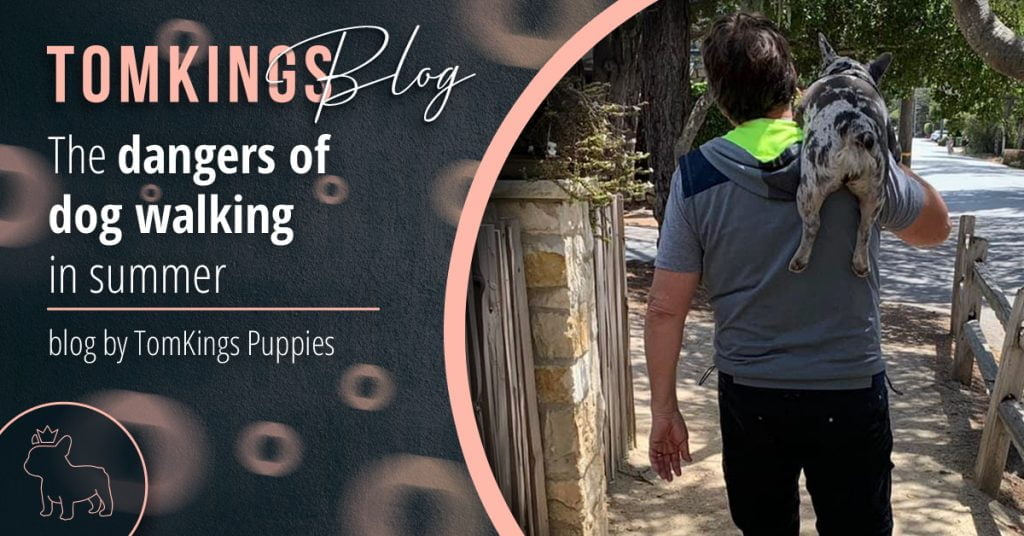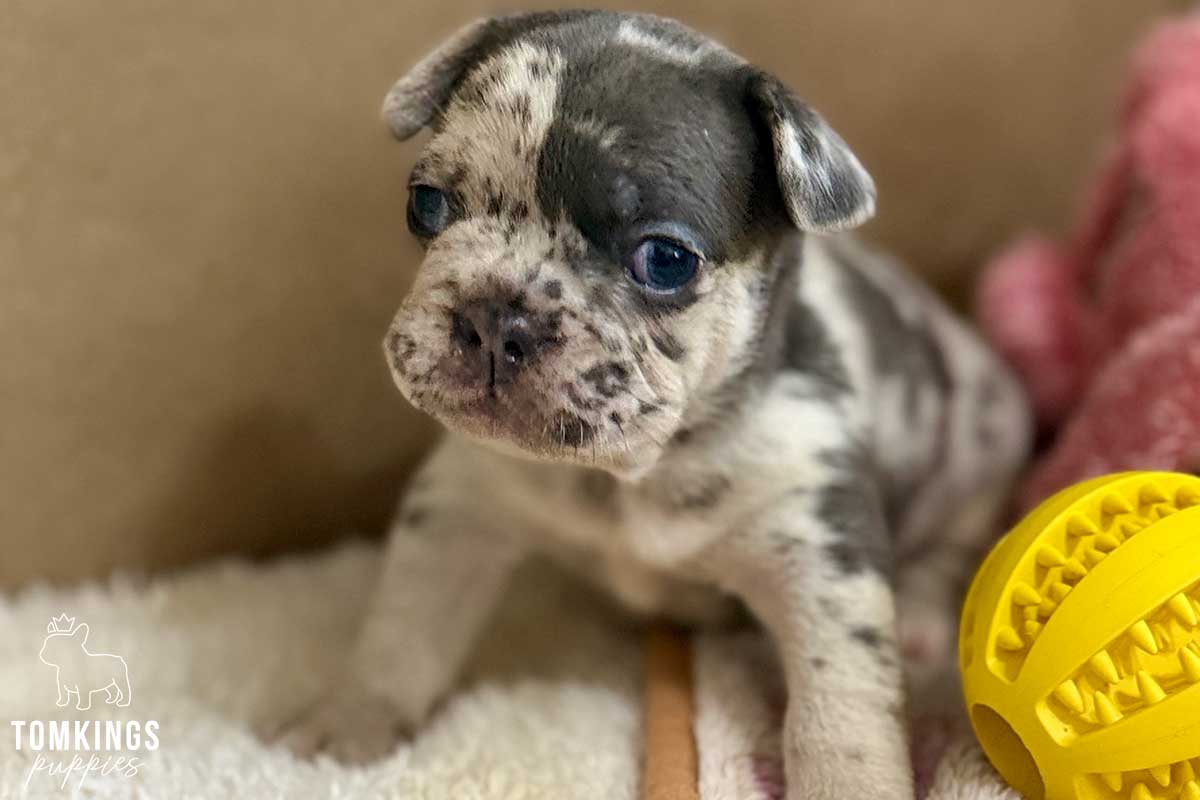Most Frenchie owners can’t wait for the nice weather to kick in. Soaking up the sun while walking a French bulldog is a truly energizing form of exercise. But soon the pleasant warm air becomes hotter and hotter, and the scorching heat is hard to bear. The midsummer heat is demanding not only for us, but also for our pets. Small-size breeds, like Frenchies, can easily get a heat stroke, or burn their paw pads on the hot pavement when walking them at the hottest time of the day. We give you some useful advice in this article to avoid these dangers. You will learn what temperature is too hot for your babe, the difference between air and pavement temperatures, and we also tell you how to avoid any heat-related incident during a summer walk.
Table of Contents
ToggleWhat temperature is too hot for your French bulldog?
This is the first and most important question when we talk about summer safety. It’s different for every dog, as they vary in size and coat type. In general, a moderate 70 degrees is usually suitable for all dogs, including French bulldogs too. But small, short-legged and flat-faced breeds are particularly susceptible to overheating as their bodies absorb heat closer to the hot ground. Hot pavement can also increase the overall body temperature of your Frenchie and lead to heat stroke. You can avoid heat strokes by using a cooling dog vest.
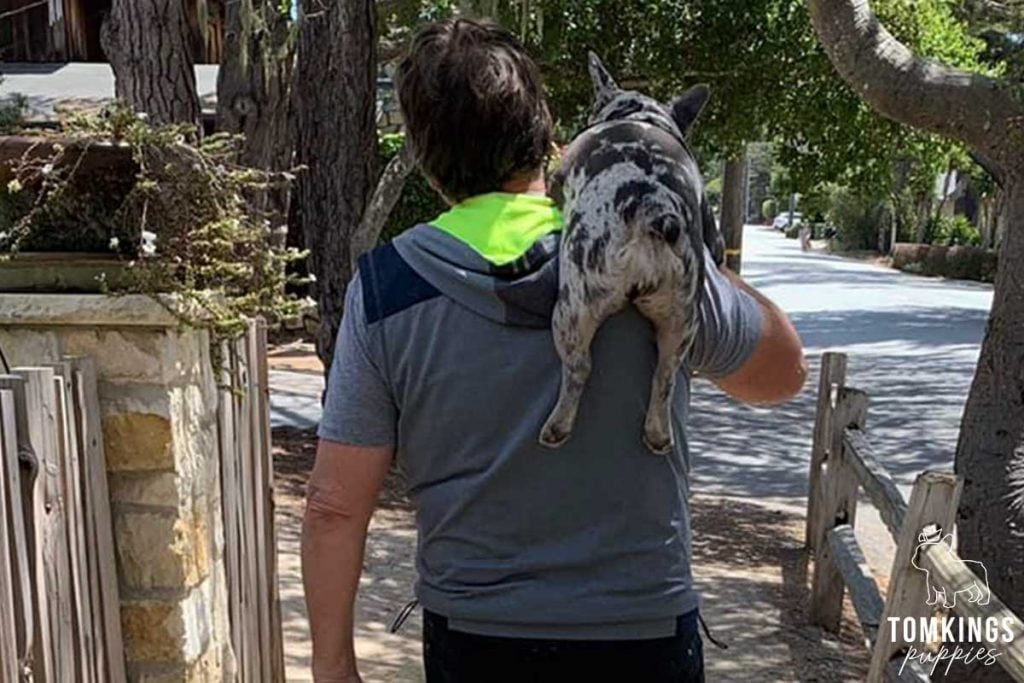

When the thermometer registers 85 degrees and stays elevated throughout the day, taking your dog even for a short walk can lead to serious injuries. Surfaces such as pavement, asphalt, sand and artificial grass can become searingly hot causing blisters or burns on their paw pads. Scorching surfaces are especially damaging to puppies with sensitive young paws, therefore we recommend you to be more cautious if you have a young pup.


Subscribe to our weekly blog newsletter
Frenchie feet anatomy
French bulldogs have five paw pads on each foot and two additional pads on the front limbs that do not make contact with the ground. Each paw pad is made up of thin skin, fat, and connective tissue, and they protect the feet from rough surfaces and provide shock absorption and traction. These sensitive paw pads aren’t immune to burns and become vulnerable in the heat.


The difference between air and pavement temperature
We might not even realize, but the temperature of the air is not the same as the temperature of the pavement. That’s because we are wearing shoes to protect our feet, but your Frenchie isn’t! Asphalt temperature can be much hotter than the air temperature (when in direct sunlight with no wind and low humidity), so it’s important to be aware of the difference between pavement and air temperatures. Pavement temperatures can be 40 to 60 degrees warmer than air temperatures. When the air temperature is 86 degrees, the asphalt temperature registers 135 degrees.
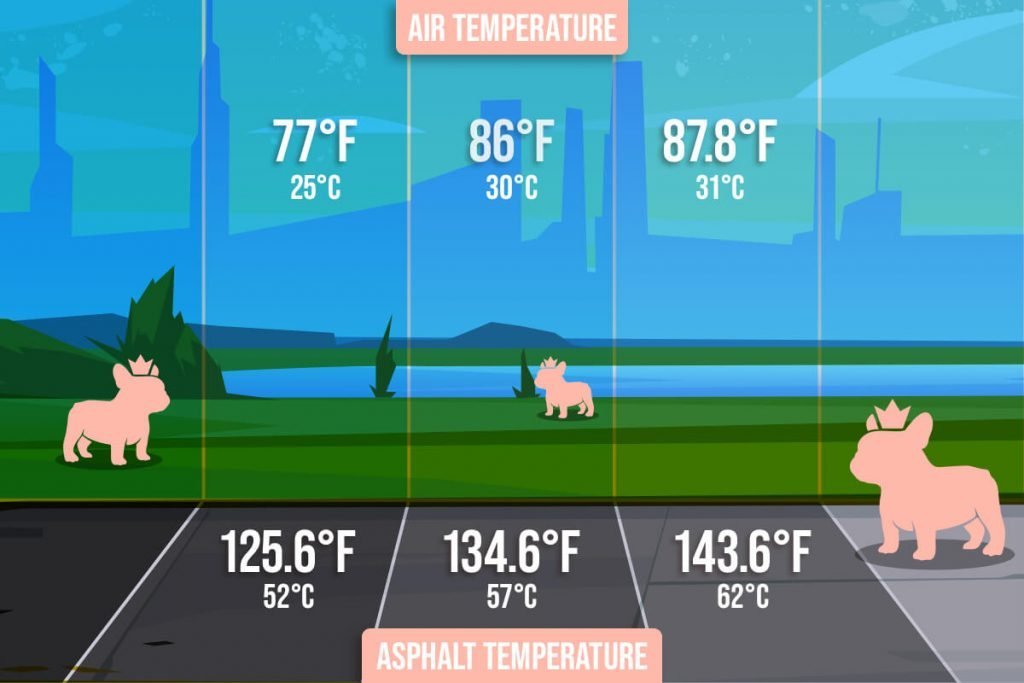

At temperatures above 130 degrees on the pavement, skin will show signs of thermal injury within just 60 seconds. This means that if the air temperature is above 80 degrees, the pavement could potentially be hot enough to burn your Frenchie’s feet if she stands on it for a minute!


Ultimate Guide
to Raising a Frenchie
How to tell if it’s unsafe to walk your Frenchie on the pavement?
Fortunately, you can easily determine for yourself whether the pavement is too warm for dog walking. All you need to do is to place your hand or bare foot on the pavement for 10 seconds. If it’s too hot for your hands or feet, it’s too hot for your dog’s paws as well. Also we recommend you to watch your dog carefully while walking: if she is holding up a foot, limping, vocalizing, licking or chewing at the feet or is not wanting to walk, the pavement is probably too hot for her!


Alternatives to walking on pavement
So you’ve determined that the pavement is too hot for your Frenchie to walk on. This is something we cannot explain to our four-legged friends, and they still need to burn their extra energies. So you need some safe alternatives in case you cannot walk on the pavement. The easiest way is to walk on grass or soil, play in a grassy yard or go to a dog park. If you are lucky enough and have a pond, a lake, or a swimming pool close to you, you can take your Frenchie swimming! Swimming can burn lots of energy too, just like walking and running, but never forget to put a life jacket on your baby before going into the water!
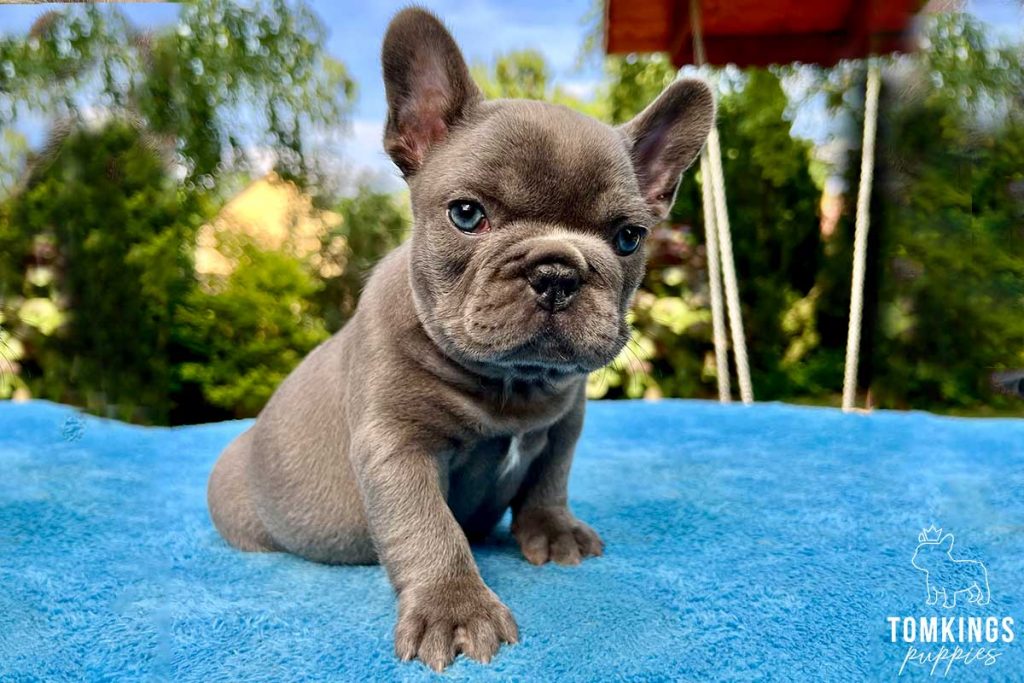

When walking your Frenchie on the pavement is unavoidable
Sometimes it’s impossible to avoid pavements. In cases like this, we recommend you provide some protection to your dog’s paws. Dog shoes, socks, and booties are simple and effective ways to protect your dog’s paws from injury. You can also walk her during the cooler times of the day, like in the early morning and late evening when the pavement is cooler.


How to tell if your dog’s paw pads are burned
Injuries can happen quickly if you are not cautious enough. If you notice a change in the paw pads’ color, your babe has probably burned her feet. A burned paw pad’s color is typically darker, more red than pink. Besides the color change, a burned paw pad also has other visible signs, like blisters.
What to do if your Frenchie’s paw pads are burned
If you notice any of these signs, bring (or carry if necessary) your dog inside right away, to a safe cool place. Flush the foot with cold water and place a cooling pad under her feet. Try not to let your Frenchie lick the injured pad, and consult your vet about further actions.


If you can’t get enough of our Frenchies, join our Facebook group called TomKings Frenchie Family to see our puppies in their forever homes!
The article is based on the expert knowledge of the TomKings Puppies team who have been breeding French Bulldogs for 10 years on their farm. All the pictures in the post belong to them and their customers, and show puppies from their breed. Check their available French Bulldog puppies, or if you have any questions or comments let us know below the article.

